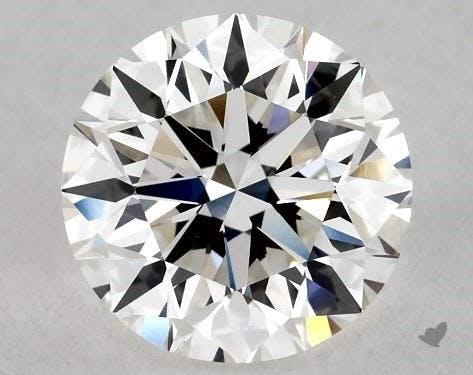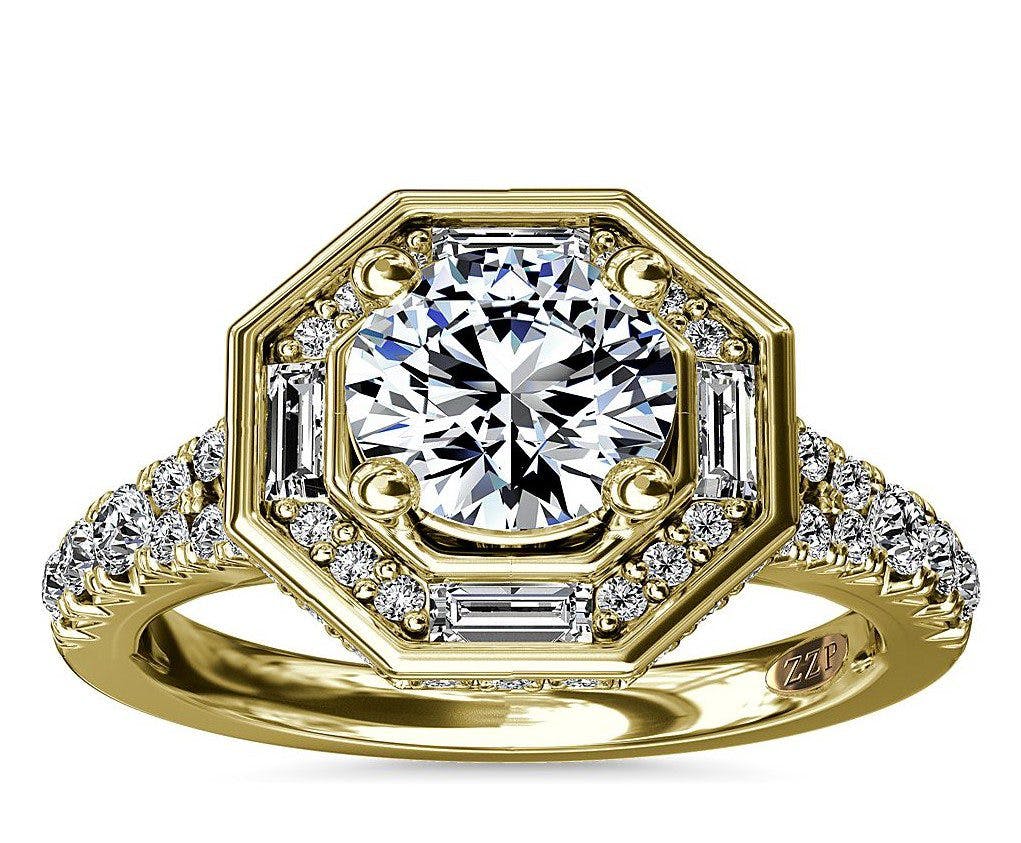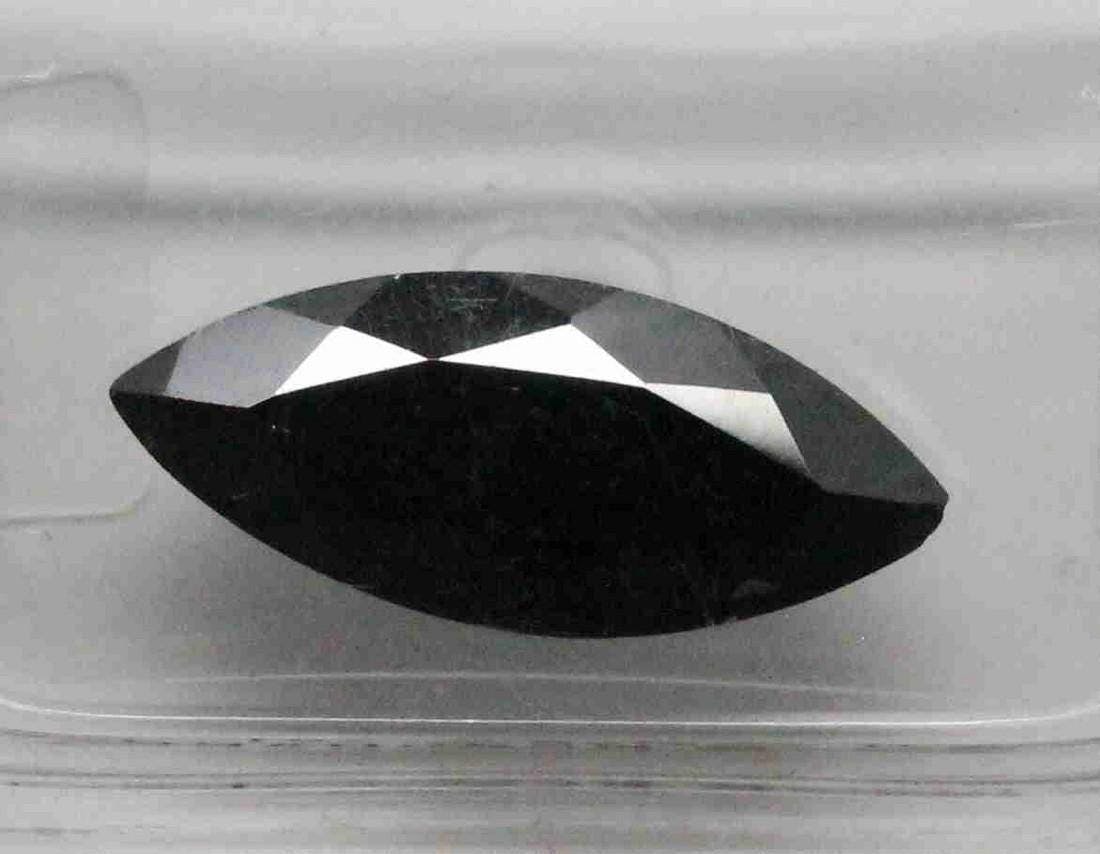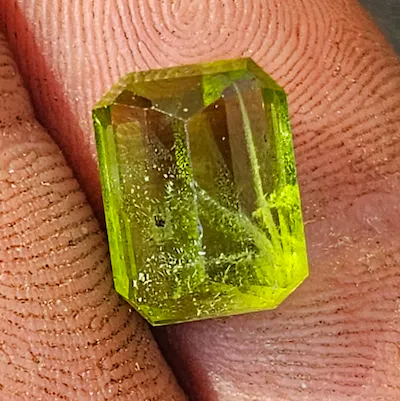News
Incorporating Round Cut Diamonds into Your Engagement Ring
Looking for the perfect diamond for your engagement ring? Look no further than the timeless and popular round cut diamond. With their optimal light return, sparkling brilliance, and 57 or 58 individual facets, it’s no wonder that round diamonds make up almost 75% of all diamond jewelry sold. While the beauty of round diamonds has been known for centuries, the technology for achieving perfect proportions and symmetry has only recently become available. From the specific proportions outlined by Marcel Tolkowsky in 1914 to considering factors like color, clarity, and cut, incorporating round cut diamonds into your engagement ring is a choice that combines tradition with modern craftsmanship. Plus, if ethical and budget-friendly alternatives are important to you, round cut lab-grown diamonds offer a great option. Whether you prefer the classic solitaire, a dazzling halo, or elegant stud earrings, there are a variety of setting options to showcase the beauty of round cut diamonds.
Why Choose Round Cut Diamonds
Popularity and Timelessness
When it comes to choosing a diamond for your engagement ring or any other piece of jewelry, round cut diamonds are a popular and timeless choice. In fact, round diamonds make up almost 75% of all diamond jewelry sold. This popularity can be attributed to the classic and elegant look of round diamonds that never goes out of style. Whether you’re looking for a traditional or modern design, a round cut diamond will always be a safe and fashionable choice.
Optimal Light Return and Sparkle
One of the key reasons why round cut diamonds are so beloved is their optimal light return and sparkle. A well-cut round diamond is designed to maximize the amount of light that enters the stone and reflects back to the viewer’s eye, creating a stunning sparkle that catches everyone’s attention. The round shape allows for 58 individual facets or flat surfaces on the diamond, which act as mirrors to enhance the brilliance and fire of the stone. Compared to other diamond shapes, round cut diamonds are known for their exceptional ability to sparkle and shine.
Understanding Round Cut Diamonds
Number of Facets
Round cut diamonds are known for their unique and intricate facets. These facets are the flat surfaces on the diamond that reflect light, enhancing its brilliance and sparkle. A round cut diamond typically has 57 or 58 facets, depending on the presence of a culet. Each facet plays a crucial role in determining the overall appearance and beauty of the diamond. The well-proportioned arrangement of these facets allows the round cut diamond to achieve its maximum potential for light reflection and dispersion.
Historical Significance
The beauty of round cut diamonds has been cherished and admired for centuries. However, it wasn’t until 1919 that Marcel Tolkowsky, a mathematician and diamond cutter, published a groundbreaking thesis on the ideal proportions for round cut diamonds. His work revolutionized the diamond industry and set the standard for the precise measurements and symmetry required to optimize the brilliance of round diamonds. Since then, his research has guided diamond cutters in producing the most dazzling round cut diamonds.
Importance of Proportions and Symmetry
Proportions and symmetry play a crucial role in the appearance and overall quality of a round cut diamond. The proportions refer to the relationships between the diamond’s width, depth, table size, crown angle, and pavilion angle. When these proportions are ideal, the light entering the diamond is well-distributed and reflected back with maximum brilliance. Symmetry, on the other hand, refers to the alignment and balance of the diamond’s facets. Perfect symmetry ensures that the diamond reflects light uniformly, enhancing its sparkle. When purchasing a round cut diamond, it is important to consider both the proportions and symmetry to ensure maximum beauty and sparkle.

Factors to Consider when Buying Round Cut Diamonds
Color
Color is an important factor to consider when buying a round cut diamond. The GIA color grading scale ranges from D (colorless) to Z (light yellow or brown). The less color a diamond has, the higher its value and rarity. For those seeking the purest and most brilliant appearance, diamonds in the D to H range are recommended. However, it is important to note that color preferences can be subjective and personal, and ultimately, the choice depends on individual preferences and budget.
Clarity
The clarity of a diamond refers to the presence of internal or external flaws, known as inclusions and blemishes, respectively. The GIA clarity grading scale ranges from Flawless (no inclusions or blemishes visible under 10x magnification) to Included (inclusions and/or blemishes visible to the naked eye). When choosing a round cut diamond, it is recommended to select a clarity grade that does not have any inclusions or blemishes visible to the naked eye. This ensures that the diamond appears clean and dazzling.
Cut
The cut of a diamond has a significant impact on its beauty and sparkle. The cut grade evaluates how well a diamond has been cut, including its proportions, symmetry, and overall craftsmanship. It is important to choose a round cut diamond with an excellent or very good cut grade to ensure maximum brilliance and light return. A well-cut diamond will reflect light back to the viewer’s eye, creating a breathtaking sparkle. Additionally, a well-cut diamond can also enhance the apparent size of the stone, making it look larger than its actual carat weight.
Ethical and Budget-Friendly Alternatives: Round Cut Lab Grown Diamonds
For those seeking ethical and budget-friendly alternatives to natural diamonds, round cut lab-grown diamonds are an excellent option. Lab-grown diamonds are physically, chemically, and optically identical to natural diamonds, but they are created in a controlled laboratory environment instead of being mined from the earth. These diamonds offer the same beauty and durability as natural diamonds, but they are more affordable and have a smaller environmental impact. By choosing lab-grown diamonds, you can have the stunning sparkle of a round cut diamond without contributing to the concerns associated with traditional diamond mining.
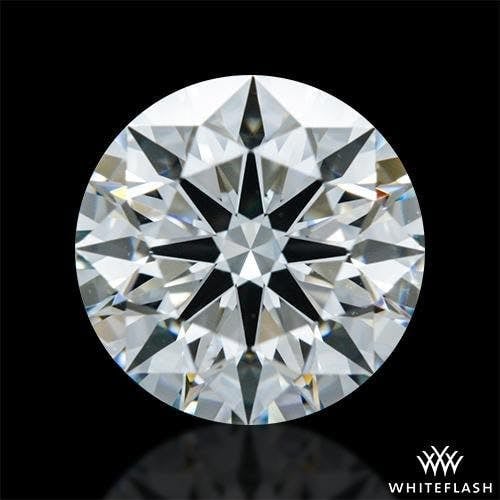
Setting Options for Round Cut Diamonds
Solitaire Rings
Solitaire rings are a classic and elegant choice for showcasing a round cut diamond. The simplicity of a solitaire setting allows the diamond to take center stage, highlighting its brilliance and sparkle. Whether you prefer a traditional prong setting or a more contemporary bezel setting, a round cut diamond will always look stunning in a solitaire ring. This setting option is perfect for those who appreciate the timeless beauty of round cut diamonds and want to keep the focus on the diamond itself.
Halo Settings
Halo settings are a popular choice for round cut diamonds, as they add an extra layer of sparkle and visual impact to the ring. In a halo setting, smaller diamonds or gemstones surround the center diamond, creating a halo effect that enhances its size and brilliance. The round shape of the center diamond is beautifully complemented by the surrounding halo of stones, creating a stunning and eye-catching look. This setting option is perfect for those who want to maximize the overall sparkle and presence of their round cut diamond.
Stud Earrings
Round cut diamonds are also commonly used in stud earrings, as their shape and brilliance make them perfect for showcasing in a simple and elegant design. Whether you prefer a single round diamond or a cluster of smaller round diamonds, stud earrings with round cut diamonds offer a timeless and versatile option for everyday wear or special occasions. The sparkle and shine of the round cut diamonds will illuminate your face and add a touch of sophistication to any outfit.
Choosing the Right Metal for Your Round Cut Diamond
When it comes to choosing the right metal for your round cut diamond, there are several options to consider. The most popular choices include platinum, white gold, yellow gold, and rose gold. Platinum is a durable and hypoallergenic metal that complements the brilliance of a round cut diamond. White gold offers a similar look to platinum at a more affordable price point. Yellow gold provides a classic and warm look that adds a touch of elegance to a round cut diamond. Rose gold has gained popularity in recent years for its romantic and feminine appearance. Ultimately, the choice of metal depends on personal style, preference, and budget.
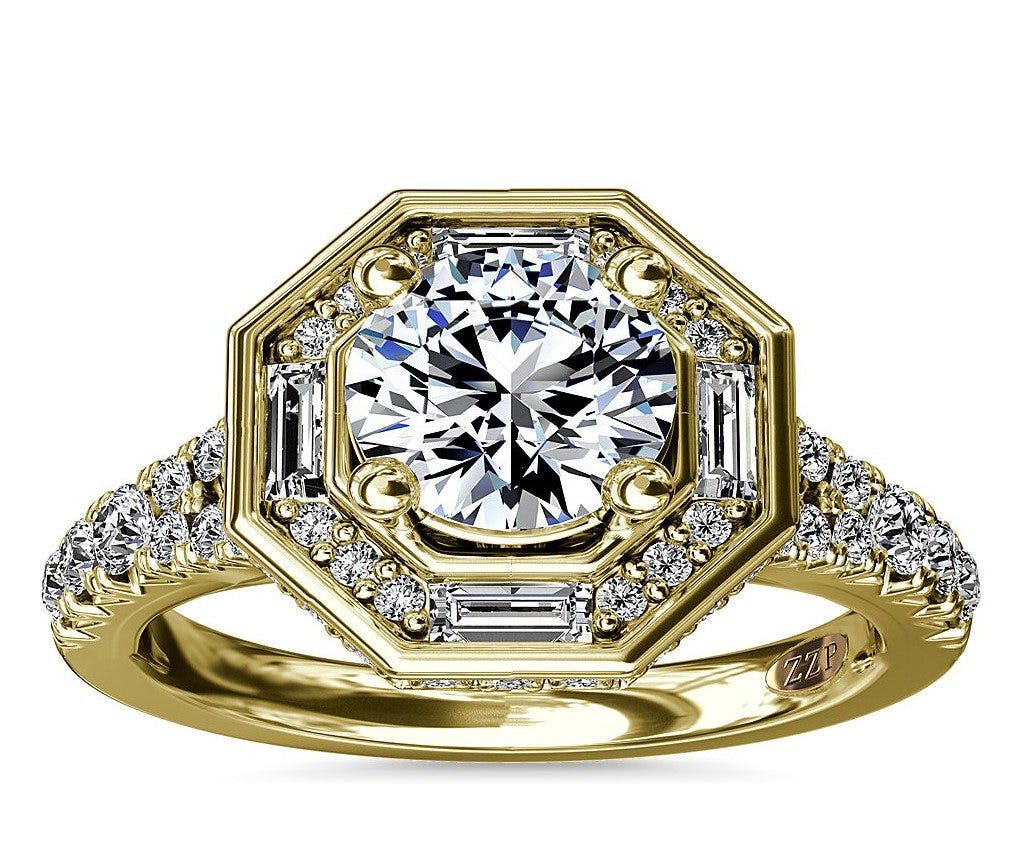
Determining the Size and Carat Weight
Choosing the right size and carat weight for your round cut diamond is a personal decision influenced by factors such as budget, style, and personal taste. When determining the size, it is important to consider the recipient’s finger size and the overall proportion of the jewelry piece. The carat weight refers to the actual weight of the diamond and can affect the perceived size and price. It is important to strike a balance between your desired size and your budget. Keep in mind that smaller round cut diamonds can still appear larger when well-cut, while larger diamonds may sacrifice quality for size. Consider consulting with a professional jeweler to ensure you choose the right size and carat weight for your needs.
Caring for Your Round Cut Diamond Ring
Cleaning and Maintenance
To keep your round cut diamond ring looking its best, regular cleaning and maintenance are essential. To clean your ring at home, you can soak it in a mixture of warm water and mild dish soap, scrub it gently with a soft-bristled toothbrush, and rinse it thoroughly. However, it is recommended to have your ring professionally cleaned and inspected at least once a year by a trusted jeweler. They can ensure that the diamond is secure in its setting and address any signs of wear or damage.
Protective Storage
When you’re not wearing your round cut diamond ring, it is important to store it properly to protect it from scratches and other damage. A soft and padded jewelry box or pouch is ideal for storing your ring. Avoid storing your ring with other jewelry pieces that could potentially scratch or damage the diamond. Additionally, it is recommended to have your ring insured to protect your investment in case of loss, theft, or damage.

Customizing Your Round Cut Diamond Engagement Ring
If you’re looking to add a personal touch to your round cut diamond engagement ring, customization options are available. Many jewelers offer the ability to choose the diamond’s carat weight, color, clarity, and cut to suit your preference and budget. You can also select different setting styles, metal types, and even add personalized engravings to make your ring truly unique. Working with a skilled jeweler, you can bring your vision to life and create an engagement ring that represents your love and commitment.
Finding the Perfect Round Cut Diamond
When it comes to finding the perfect round cut diamond, it is important to consider your individual preferences, budget, and the quality factors discussed earlier. Researching reputable jewelers, reading customer reviews, and seeking recommendations can help ensure a positive buying experience. It is also beneficial to view diamonds in person whenever possible to assess their beauty and sparkle. Whether you choose a natural or lab-grown round cut diamond, finding the perfect stone is an exciting process that leads to a cherished piece of jewelry that will be worn and admired for years to come.
